Your baby will be here before you know it, and this third trimester plus size pregnancy week by week breakdown will help you feel prepared.
Welcome to your third trimester!
Disclosure: Plus Size Birth is a participant in the Amazon Services LLC Associates Program, an affiliate advertising program. As an Amazon Associate, I earn from qualifying purchases. Read more about these links in my disclosure policy.

Third Trimester Quick Overview
You'll start seeing your care provider more often starting in this trimester.
From 28 to 36 weeks of pregnancy, you'll likely have a prenatal care appointment every two weeks. And once you hit 36 weeks, until your baby is born, you'll go in weekly. With that said, if you're having a high-risk pregnancy or your care provider has any concerns, you might have additional appointments.
It's also common for people with a BMI above 30 to have additional ultrasounds near the end of pregnancy. The reasoning for this is to help assess the baby's size and positioning. But please note that a baby’s size estimates are notoriously inaccurate, and here’s a helpful article from Evidence Based Birth.
Talk with your provider if they suggest an induction or a planned cesarean birth based on your baby’s size estimate. And consider getting a second opinion!
In this section, we'll help you feel prepared and informed so you can navigate anything that may or may not occur throughout your third trimester.
We'll focus on warning signs to look out for when it comes to increased risks, intimacy, planning for your upcoming birth, preparing for postpartum, and so much more.
In addition, you'll get resources for size-inclusive needs: from what to pack in your hospital bag to plus size baby carriers.
Plus Size Third Trimester Pregnancy Breakdown
None of the information on this website or our social media outlets should be interpreted as medical advice. Always talk to your care provider about any questions or concerns you may have!
Week 28: Kick Counts
By now, you're likely not only feeling flutters but also kicks from your baby growing inside you!
During the third trimester, your care provider will talk to you about doing kick counts.
You'll do this by noting the time of day when your baby is most active. It's typically different for each pregnancy. Then you'll get comfortable, preferably lying on your side. But you can also sit down and time how long it takes for you to feel ten distinct movements. While it’s called a “kick count”, these movements don't have to be kicks; they can also be any twitches, nudges, or rolls (we just don’t count baby hiccups).
You'll want to contact your care provider if you don't feel at least ten movements within two hours. Then they'll have you come in to be monitored.
Kick counts are one of the best ways to detect if something concerning is happening early on. But don't panic if you feel less movement than you think you should on any given day. Babies sometimes have low energy days, just like we all do. And sometimes the position of your baby or the position of your placenta can impact what you feel and where!
It can sometimes take longer to identify your baby's rhythm when you're plus size. So, even if you're reading to start kick counts at 28 weeks, your provider might recommend waiting a bit longer.
As we've shared, it's always a good idea to contact your care provider with any questions or concerns. Remember that no question is too silly or concern too small!

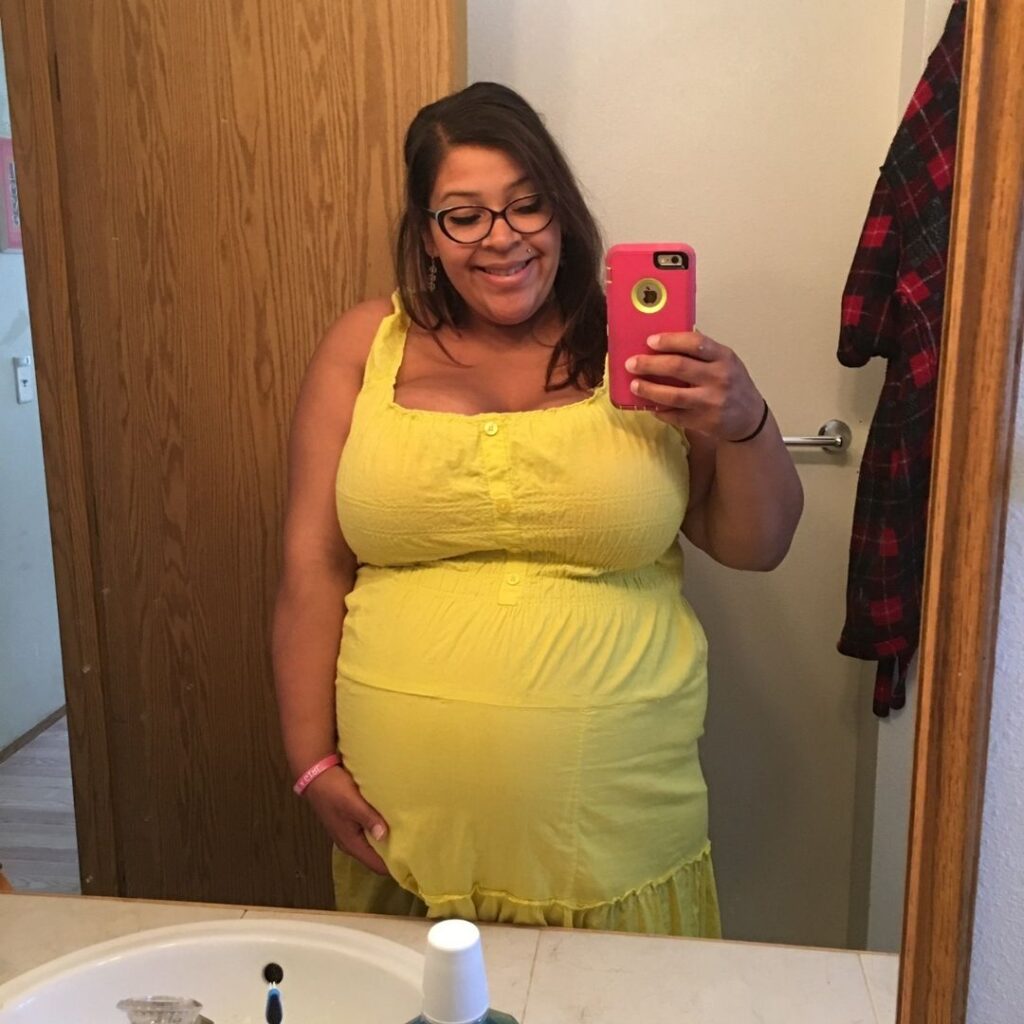

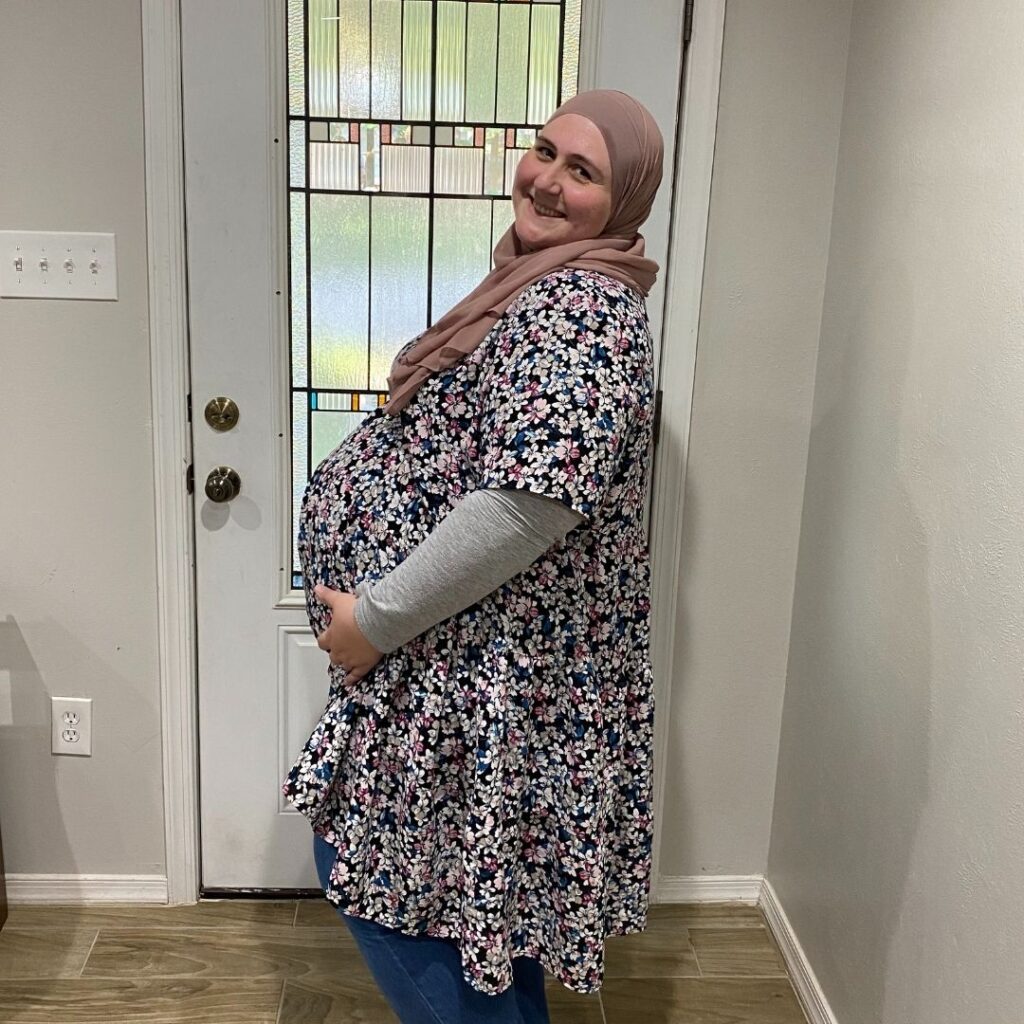
Week 29: Sleep Apnea
Getting a good night's rest during your third trimester will likely become increasingly elusive. You might consider investing in a good-quality pregnancy sleep pillow if you haven't already.
Getting up at all hours to pee can keep you from getting a full night's sleep. People with a BMI over 30 are also at an increased risk of developing sleep apnea during the third trimester of pregnancy.
Sleep apnea not only causes fatigue but can even increase your likelihood of developing preeclampsia. So, learn the warning signs and talk to your provider about getting assessed if you're concerned.
Depending upon your insurance and care provider's recommendation, you can even do home tests if you’re worried about the quality and quantity of sleep. So don't feel like you'll have to go outside the home for a sleep study, you could have flexible options.
Even if you have no plans to co-sleep, the odds of falling asleep in bed with your baby at some point are high. This is especially the case if you're planning to nurse. So it's important to understand safe sleep habits now.
We find obesity is often listed as a reason not to co-sleep. One of the main concerns here is the increased risk of sleep apnea. This is another reason to get screened if your care provider makes that recommendation.

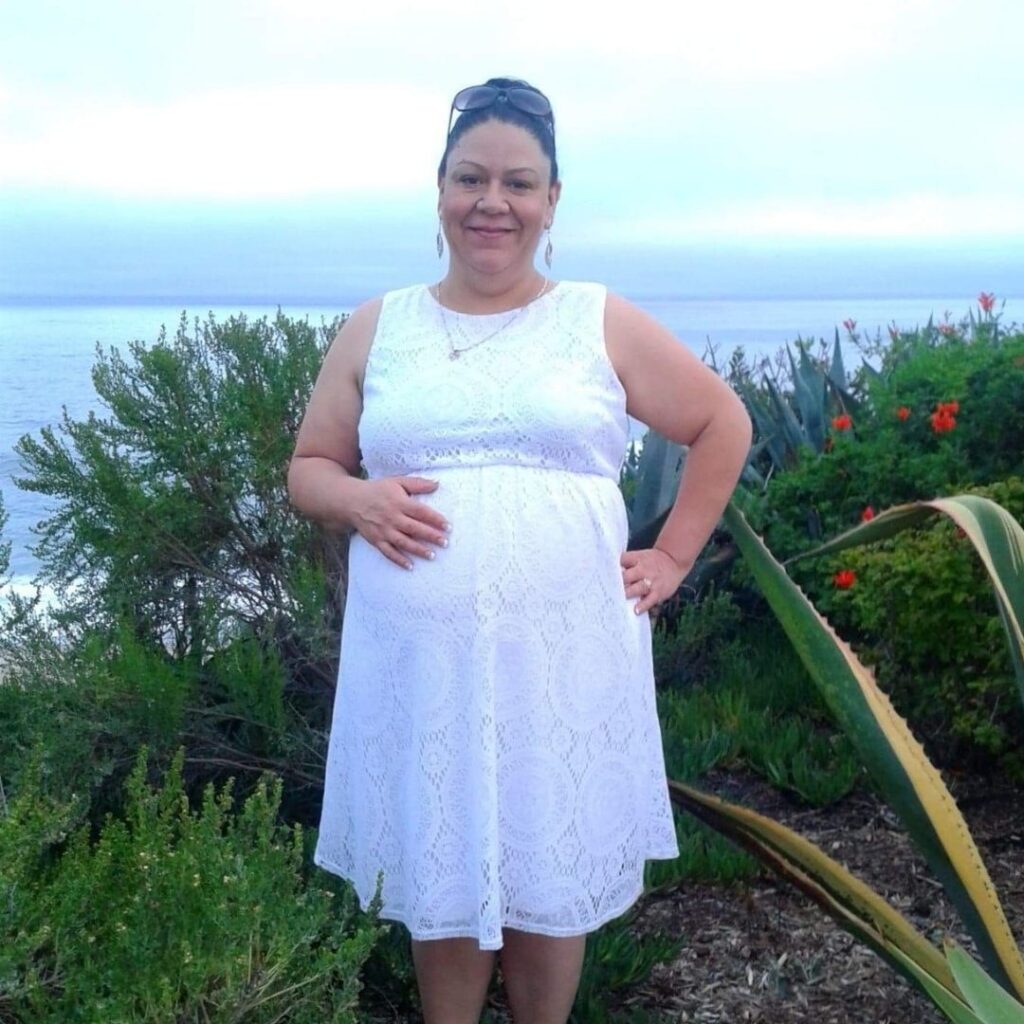
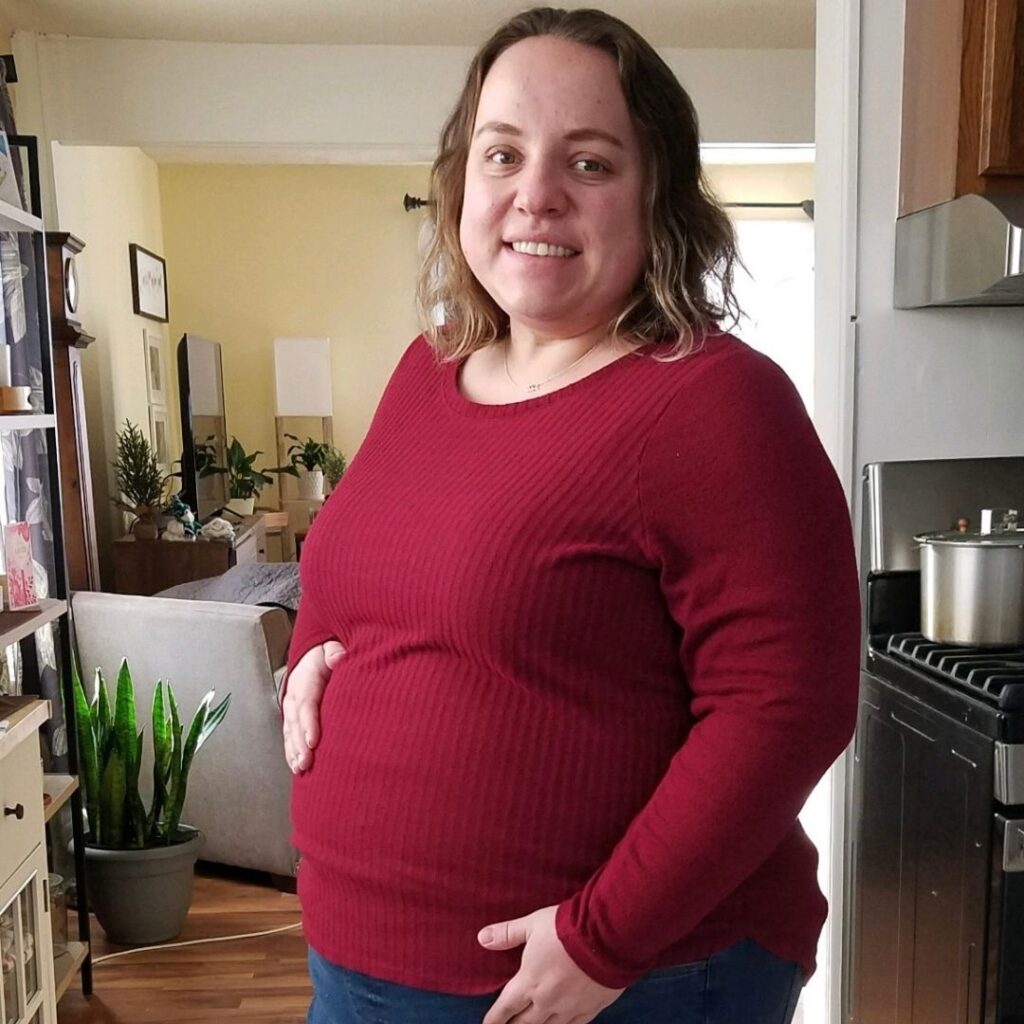

Week 30: Intimacy
Before we share plus size pregnancy sex positions (yes, we support you in all ways here at Plus Size Birth), let's discuss intimacy.
Intimacy is a component of most relationships. But as your body and hormones are shifting throughout pregnancy, your desires might also shift.
For the majority of people, it is safe for you to continue being sexual throughout your pregnancy if you desire. You can check in with your provider but “pelvic rest” is not routinely recommended in pregnancy.
A sweet snuggle on the couch can sound like the only hot romance you want. And there's nothing wrong with that! Or you might experience a swing in the other direction – and there’s nothing wrong with that either.
The key is having open communication with your partner. If you think your sex life is shifting now, just wait until you have a newborn.
To address all of this, we have you covered with tips not only for fun times but for challenging conversations – How to Have Great Plus Size Pregnancy Sex: Talk and Tips.
Sidebar: Self-pleasure can be incredible during pregnancy with the increased blood volume throughout your body. So, consider starting there, if that’s accessible to you, and then see how you feel.


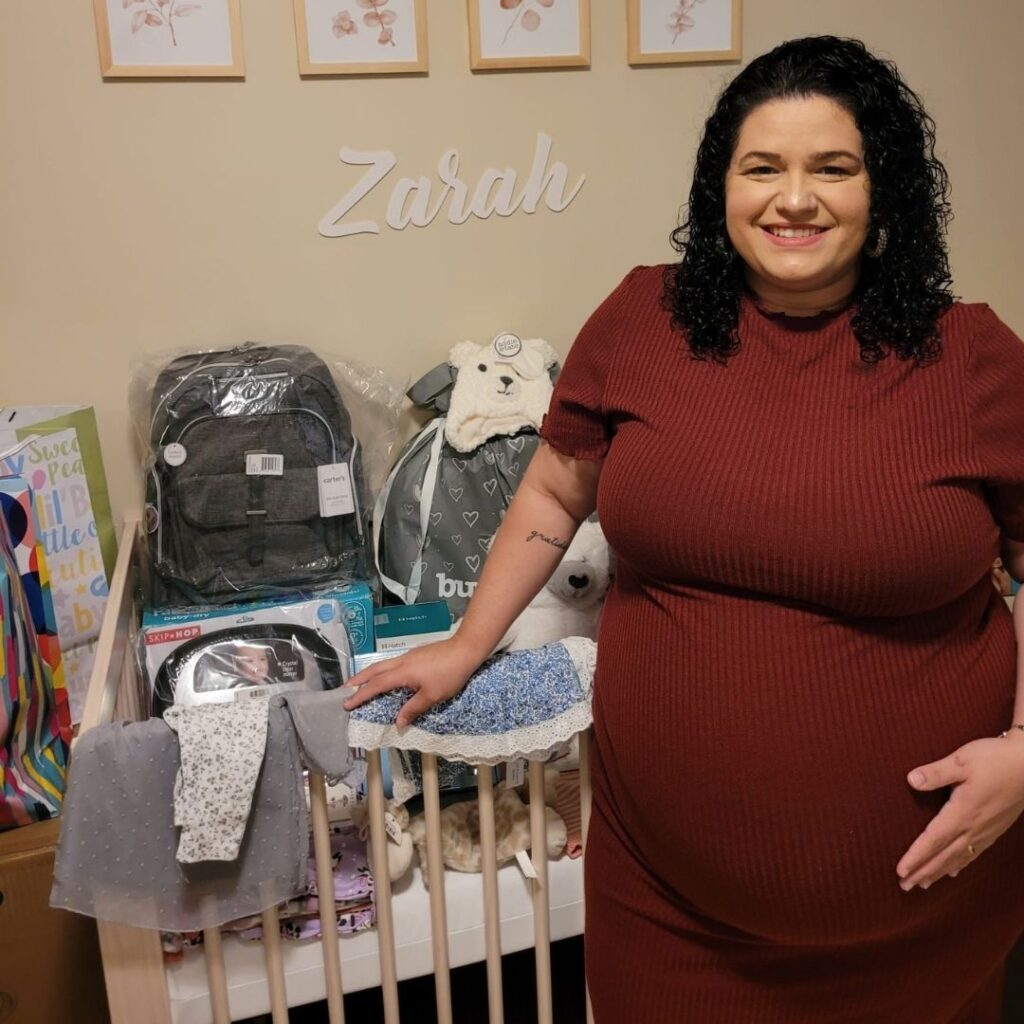

Week 31: Creating a Birth Plan
The power of a birth plan isn't the actual plan, it's the process of becoming educated about all of your options!
When the time comes to write your birth plan (also called birth preferences), make sure you feel fully informed about each decision you're making.
We hope you're planning to take a childbirth education class (or already have taken a classs). You can also tap into plenty of free resources online or check our books from your local library. There are even YouTube videos with childbirth education lessons.
If you've hired a doula for your birth, they'll likely walk you through writing your birth plan. But there are also many resources and templates online. Just do a quick Google search and select the one that feels right to you.
It's the process of becoming educated about all of your options that will help you to make informed and empowered decisions throughout your labor and birth experience. So, even if you're planning to have an unmedicated birth, we still recommend learning about all of the available pain relief options.
You might also want to include your preferences in case a cesarean birth is necessary. Here's a lot of helpful information regarding having a c-section when you have a high BMI.
If you're giving birth at a hospital and can take a tour, be sure to note any accommodations they have for people in larger bodies. You'll especially want to inquire about wireless fetal monitoring. Find out if it's available for each room and how many units they have on the labor and delivery floor.
Also, examine what brand they use as the Novii Wireless Patch System was developed for people with a high BMI. Lastly, don’t forget to go over your birth plan with your care provider. You'll want to do this before the birth so you are all on the same page.
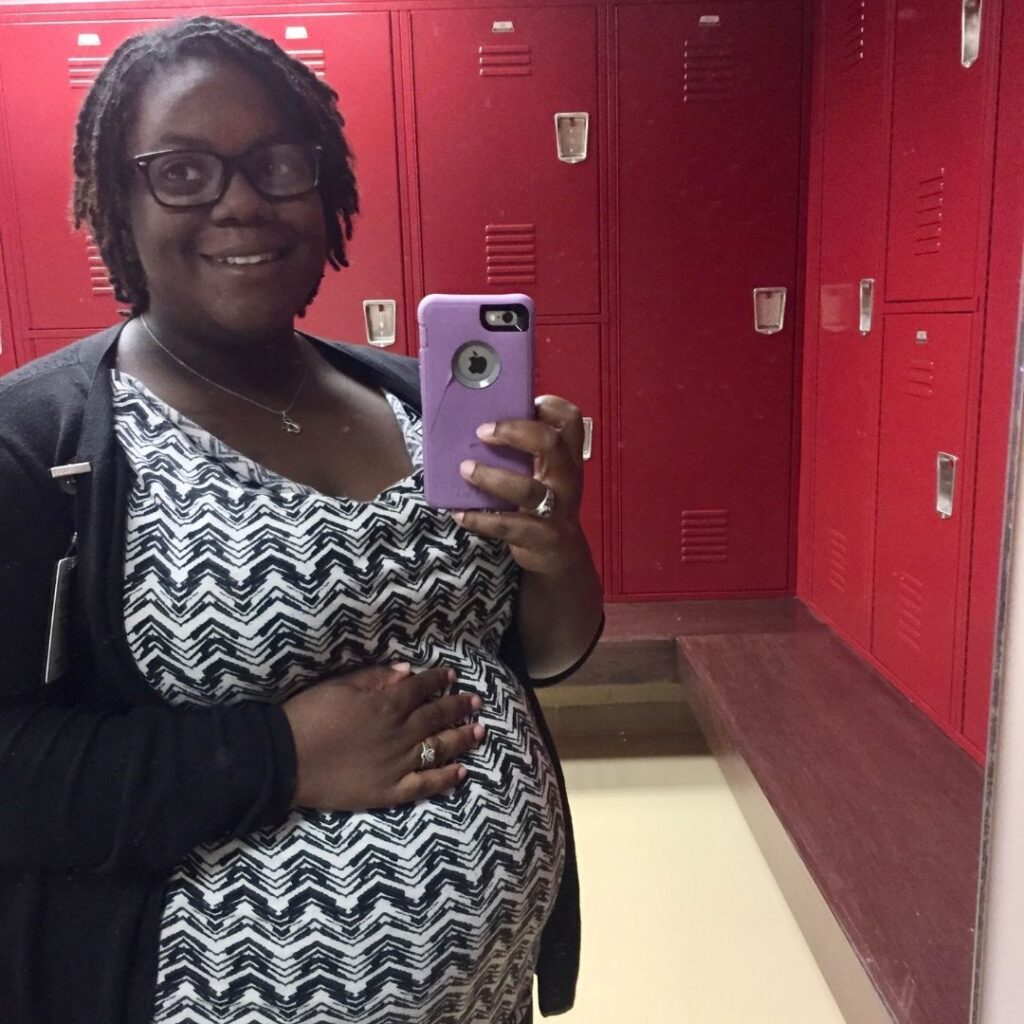



Week 32: Questions to Ask When Selecting a Pediatrician
Around now is when you start your search for a pediatrician if you don't already have one you love.
Just like connecting with a size-friendly healthcare provider is essential during a plus size pregnancy, you'll also want to find a pediatrician who is Health At Every Size® informed whenever possible.
The American Academy of Pediatrics has studied how weight stigma impacts children and adolescents. And they are working to educate providers on how to take a compassionate approach.
You'll also want to make sure your selected pediatrician has considered the needs of larger parents or caregivers by providing size-inclusive seating in both the waiting areas and exam rooms.
Here are a few helpful questions you can ask when searching for a size-friendly pediatrician:
- Does your office have size-inclusive seating in the lobby and exam rooms?
- How do you handle conversations about weight with parents and your patients as they get older?
- Are you Health At Every Size® informed?


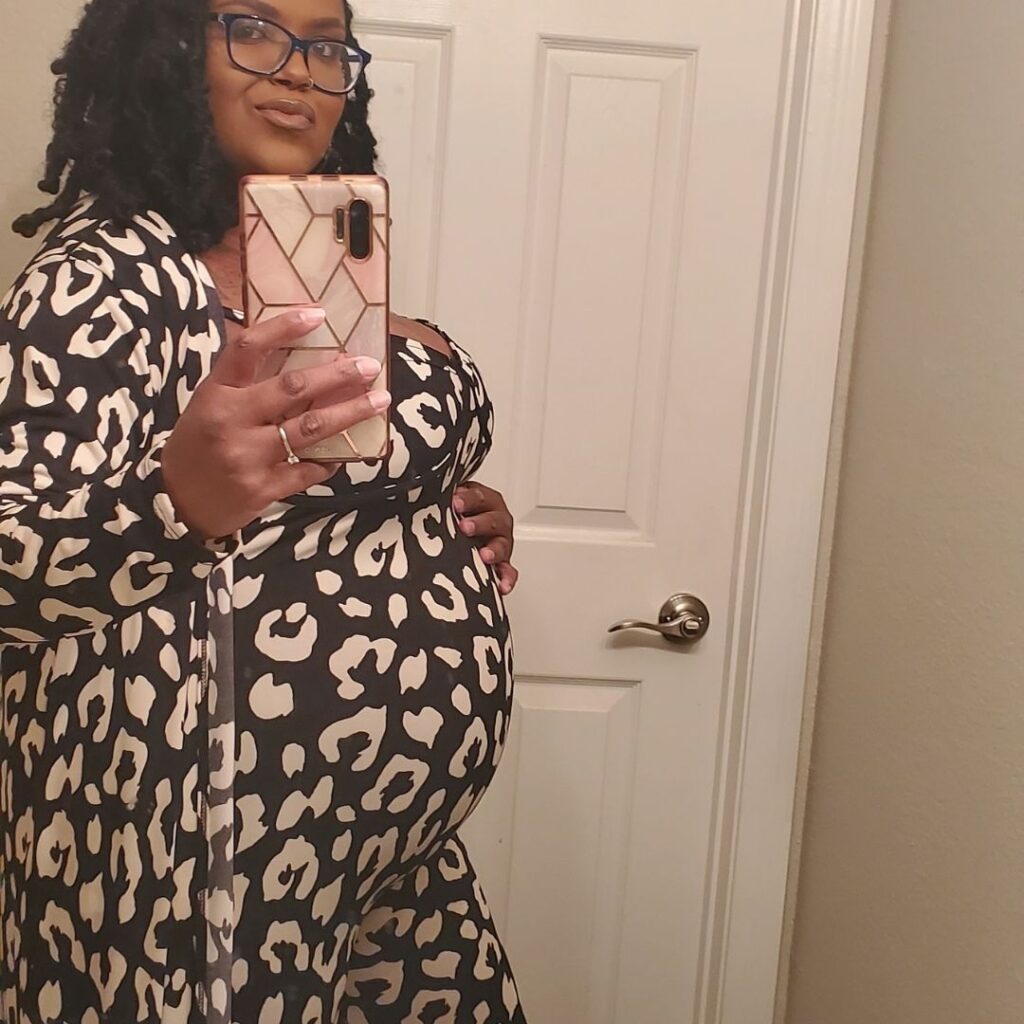
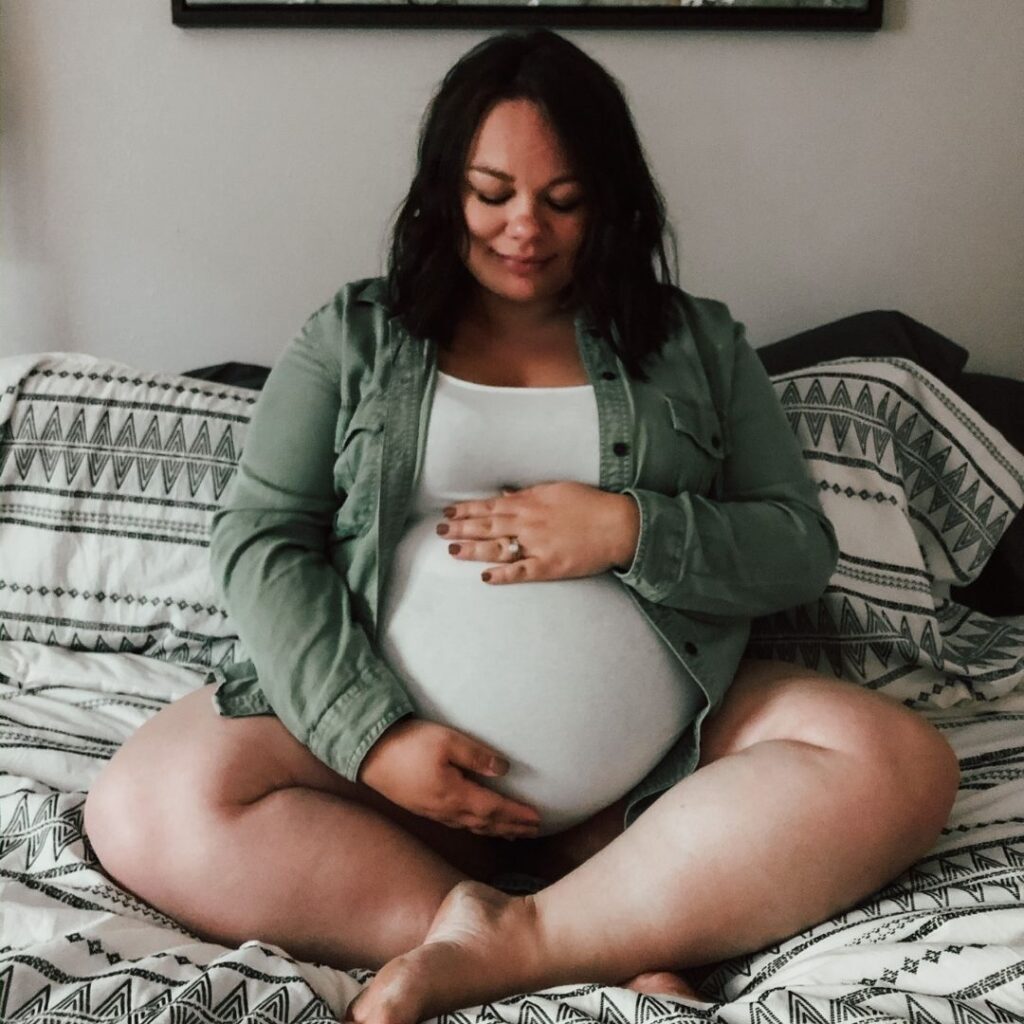
Week 33: Feeding Your Baby
You've likely contemplated by now how you plan to feed your baby. Perhaps you're planning to nurse, pump, formula feed, or do some variation.
We have lots of information for those planning to breastfeed or chestfeed. But before sharing, we also have support for those planning to pump or formula feed.
Here at Plus Size Birth, we support whatever choices you make around feeding your baby. We also know that breastfeeding and chestfeeding rates are lower among people with a high BMI, so we have a lot of resources to support lactation if that’s important to you.
We highly encourage people to connect with an International Board Certified Lactation Consultant (IBCLC) before giving birth. Studies show continuous support from an IBCLC can improve breastfeeding outcomes for people with a BMI over 30 and many insurance companies cover visits with an IBCLC.
If you have Polycystic Ovary Syndrome (PCOS), you'll especially want to consider working with an IBCLC as PCOS can impact breastfeeding as well.
Along with working with an IBCLC, there are low-cost and free community resources for body-feeding.
La Leche League International is a popular resource for many communities. You’re also free to explore locally to see if there are other breastfeeding groups near you. Attending an in-person group is a way to expand your support system by connecting with other families. There are also many online forums, but be cautious about following any advice you receive online.
Lastly, it's not too late to sign up for a breastfeeding course in-person or online. And there are lots of great books like Breastfeeding Made Simple.
For support, tap into our plus size breastfeeding resources. Also, listen to Plus Mommy Podcast episodes on lactation support including Everything You Want To Know About Plus Size Breastfeeding.




Week 34: Size-Friendly Hospital Bag Necessities
Now's a time when you're starting to get everything prepared for your baby's arrival at home. From getting your car seat installed to decorating the nursery, there's a lot to do. We have a recommendation for size-inclusive gliders and rocking chairs if you're on the hunt.
From chapstick to a phone charger, there are lists of essential items you need to pack in your hospital bag. But what about when you're plus size? Is there anything special you need to include?
You know it!
We have you covered with our Things To Pack In Your Hospital Bag When You're Plus Size resource!


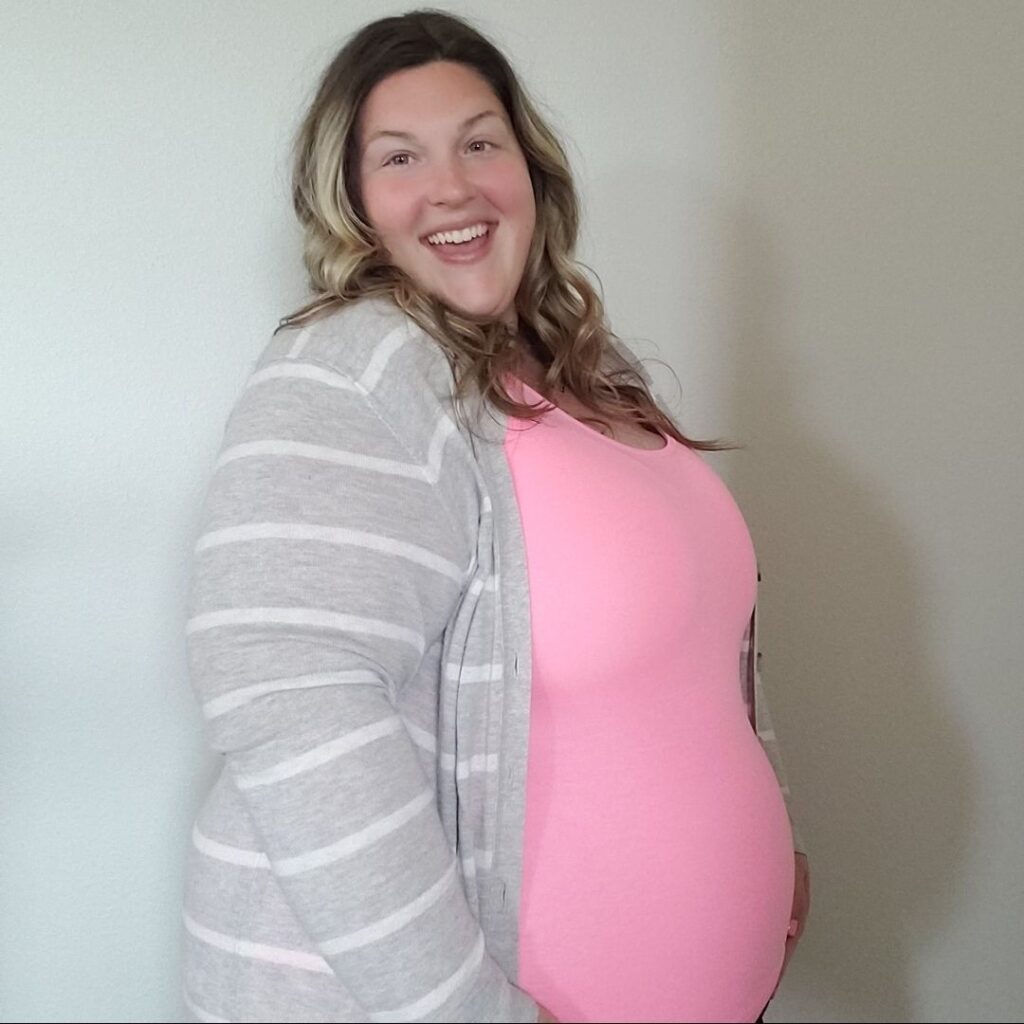

Week 35: Preparing for Labor and Birth
Hopefully, by now, you've attended a childbirth education class, read a few books, and have written your birth plan.
If not, don't worry, there's still time!
When it comes to preparing for labor and birth as a plus size person, there are a few things we want you to know.
First, let's briefly go over the three stages of labor.
The first stage of labor starts when you have consistent contractions and continues till the moment you are ten centimeters dilated.
The second stage of labor is pushing and delivery.
And then the third stage is delivering your placenta.
The first stage of labor is often longer when you have a high BMI, but the second stage can be shorter. It’s super helpful to get into different positions about every half hour during labor to encourage your body to keep progressing.
If things start to slow down or stall, your provider might recommend augmenting your labor with Pitocin if you are laboring in the hospital. Working with a doula can help you labor at home for longer and encourage labor to progress with position changes.
Monitoring your labor with one monitor for your contractions and the other for your baby's heart tones can be a bit more challenging when you exist in a larger body. Because of this, you'll want to inquire about wireless monitoring whenever possible. And advocate for intermittent monitoring with a doppler if you're having a low-risk and unmedicated labor.
When the time comes to start pushing, this stage can be shorter for plus size people, so tune in to your body and try different pushing positions with the support of your care team.
And of course, things can change throughout any phase of labor, and you might need to have unexpected interventions, including a cesarean birth. Regardless, there's a lot to be said for believing in your body's abilities!
Cesarean birth isn't the optimal outcome for a person with a high BMI with additional risks, including longer operating time, more blood loss, and higher rates of postpartum infection. In addition, your OB-GYN will need to lift your belly out of the way, and this can be emotionally distressing if you don't know this will occur.
With all of this said, please know there's nothing wrong with needing to give birth this way! Most OB-GYNs are highly skilled at performing a cesarean section for people of all sizes. If you’d like, you can learn a lot more about having a c-section with a high BMI.
See our article on plus size labor and delivery for a lot more information to help you feel prepared.



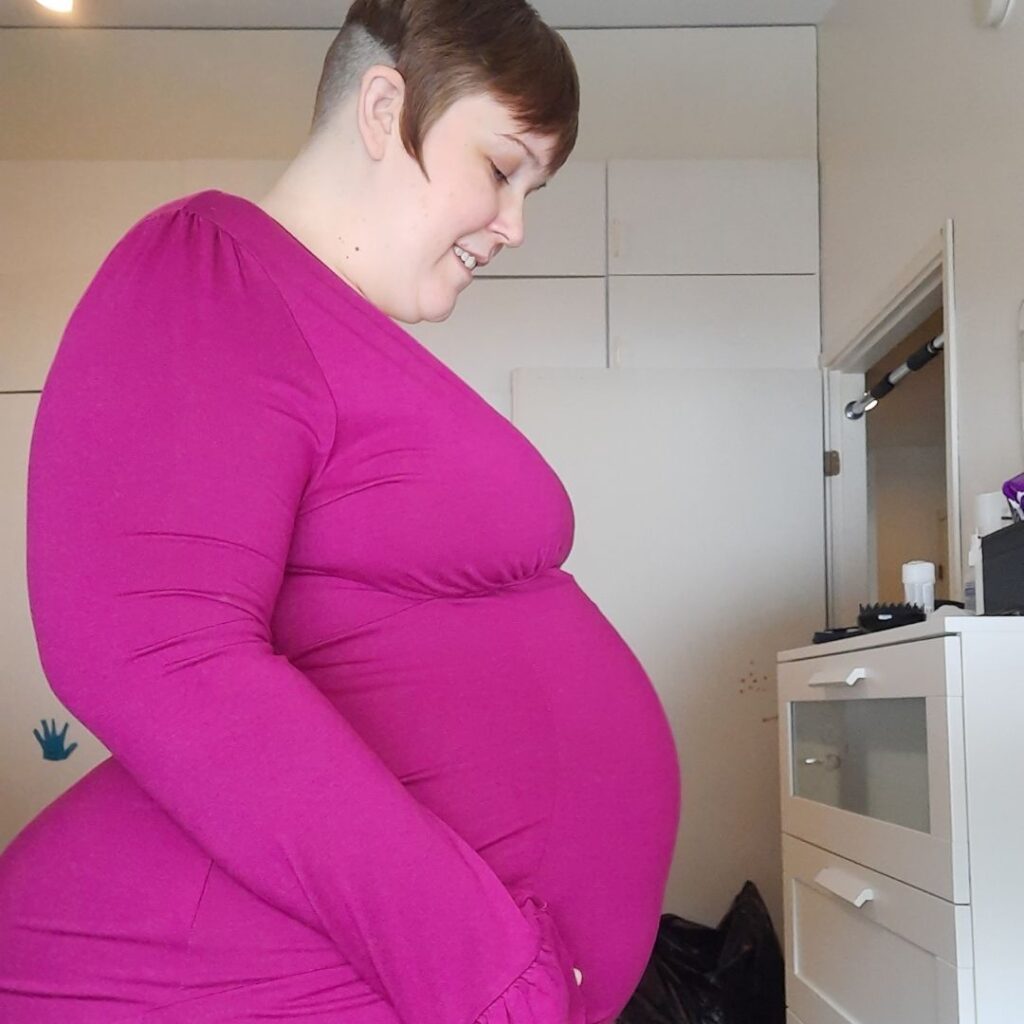
Week 36: Induction Concerns
By now, we hope you've connected with a provider who makes evidence-based recommendations in the best interest of you and your baby. Unfortunately, around 36 weeks of pregnancy, we start hearing a lot of bait and switch things happening during prenatal visits.
For example, some women feel they've connected with a size-friendly care provider until this point. Then, suddenly, their OB-GYN is talking about induction due to concerns about a big baby or to avoid potential risks, even when everything about their pregnancy has been straightforward and healthy.
It is true that people with a BMI over 30 do have an increased risk of fetal macrosomia (having a baby larger than 8 pounds, 13 ounces). So, it's important to assess if these are significant concerns based on your measurements and ultrasounds – or if your provider is making assumptions based on your size.
One outstanding resource for people of all sizes is the article – Evidence on: Induction or Cesarean for a Big Baby. Of course, you can also get a second opinion at any point. And there's still time to switch care providers, but we understand that comes with many obstacles this far along in pregnancy.
If you and your provider decide you should have an induction, a study in 2017 found induction didn't increase the cesarean birth rate for people with a high BMI. So, that's good to know!
There's sure nothing wrong if you need or even want an induction, but it's essential to become educated about what to expect.
If your care provider states that you need to have a c-section based on your BMI alone, that's not an evidence-based recommendation. People in larger bodies can absolutely have uncomplicated vaginal births and should not have a cesarean birth recommended without other reasons. We highly encourage you to get a second opinion.
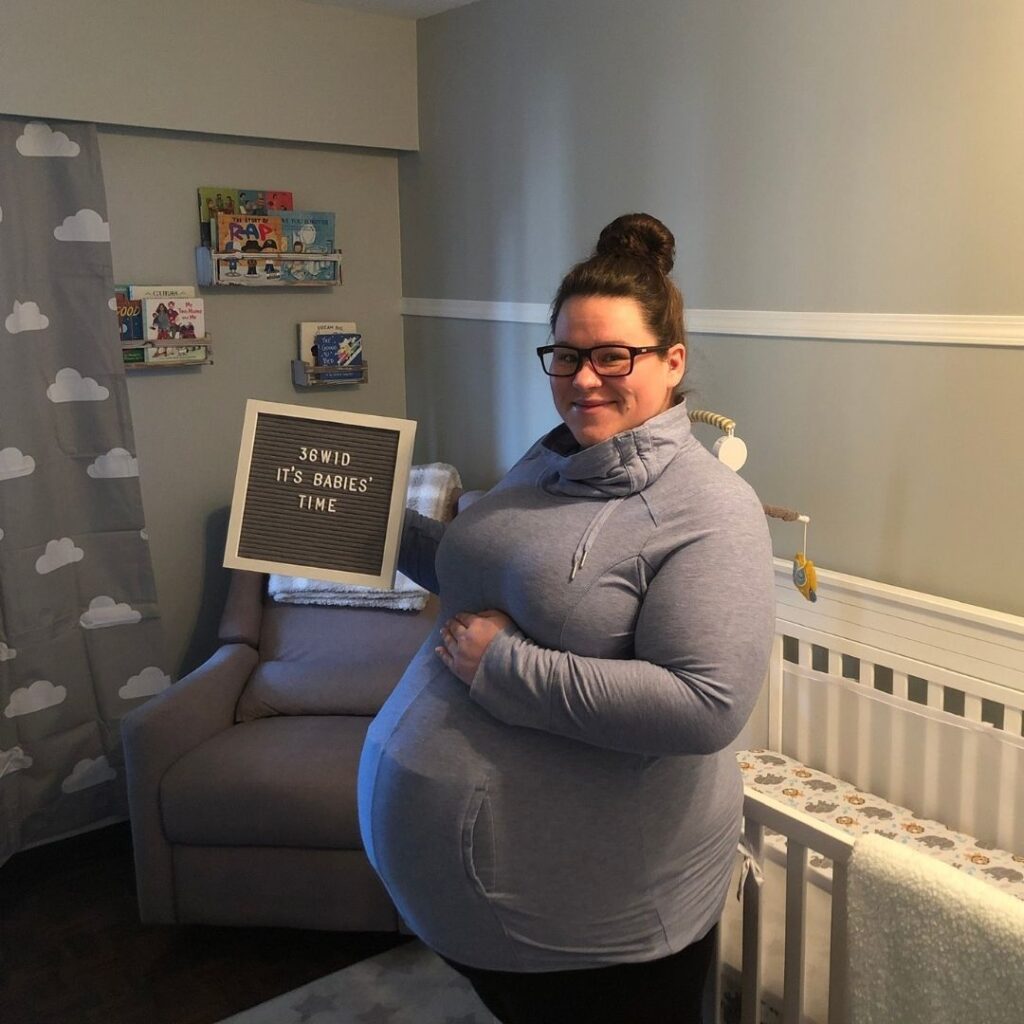



Week 37: High Blood Pressure
Since the beginning of your pregnancy, your care provider has kept a close eye on your blood pressure and signs of gestational hypertension.
After twenty weeks of pregnancy, they are especially looking for signs of preeclampsia – when high blood pressure is accompanied by protein in your urine and swelling in your legs, feet, and hands.
Now, at 37 weeks, care providers see people developing preeclampsia at a greater rate. It’s helpful for you to know the signs to look for as you're at a greater risk of incurring preeclampsia with a BMI over 30.
There are many signs, from dizziness to belly pain in the upper right side to severe headaches and weight gain. Because sudden weight gain can be a sign of preeclampsia, it's another reason to be open-minded to being weighed during your pregnancy visits.
You'll want to pay close attention to any changes in how you're feeling and contact your care provider with any concerns. They might also suggest you have a blood pressure cuff at home to check your own blood pressure more regularly.
There are many things you can do to reduce your risk, including remaining physically active, putting your feet up throughout the day, and staying hydrated.
Even though you are at an increased risk, remember the difference between relative risk and absolute risk. The odds are still in your favor of not incurring preeclampsia if you’re having a low-risk pregnancy.
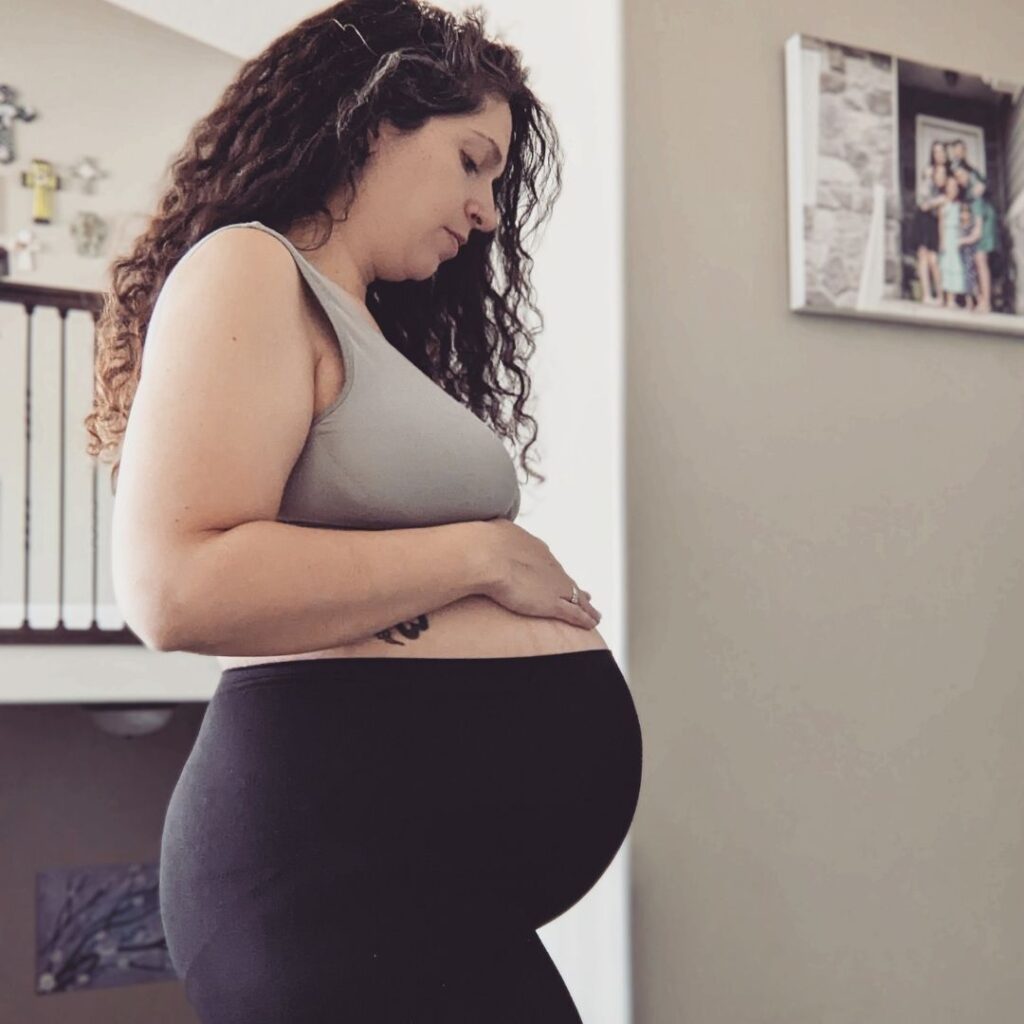



Week 38: Planning for Postpartum
This is a great time to make sure you're set up for postpartum. This doesn't just mean making sure you have all the gadgets to make your life easier, like a baby swing and a bassinet.
A lot goes into postpartum, from your physical recovery to mental wellness. In the same way there are a few differences during a plus size pregnancy, the postpartum experience can be unique when you're plus size.
We have a complete postpartum resource that covers what you need to know because we want you set up for success.




Week 39: Getting Ready Baby
Are you ready for the baby? We're betting so! Most people give birth between 39-41 weeks so this is the window where your baby is most likely to arrive.
Now's a time when your care provider might bring up options for getting things going. From consenting to a membrane sweep to scheduling induction, don't forget all you've learned about self-advocacy and informed decision-making.
To see if your body is favorable for induction, be sure to ask about your Bishop score.
While this is never a fun topic to address, risks for stillbirth start to increase for people of all sizes following 40 weeks. This risk is higher when you're plus size, but remember the difference between relative and actual risk and talk to your care team if you’re concerned.
At this stage especially, you want to make sure you keep an open and honest line of communication with your care provider.
There are many things you'll read online to jumpstart labor, but most of those things don't work unless your body and baby are ready. If going into labor was as easy as going for a walk or eating spicy food, no one would ever be waiting for a baby to come!
Feel free to try some of the fun things like getting a pedicure or eating spicy food (if it doesn't give you heartburn), having sex, or going for a walk, but you might want to stay away from castor oil or herbs unless you have spoken with your care provider about risks and benefits.
Feel free to go back and review our helpful guides around preparing for birth and postpartum. And don’t forget to do something kind for yourself!
If your baby has already arrived, we're so incredibly happy for you!
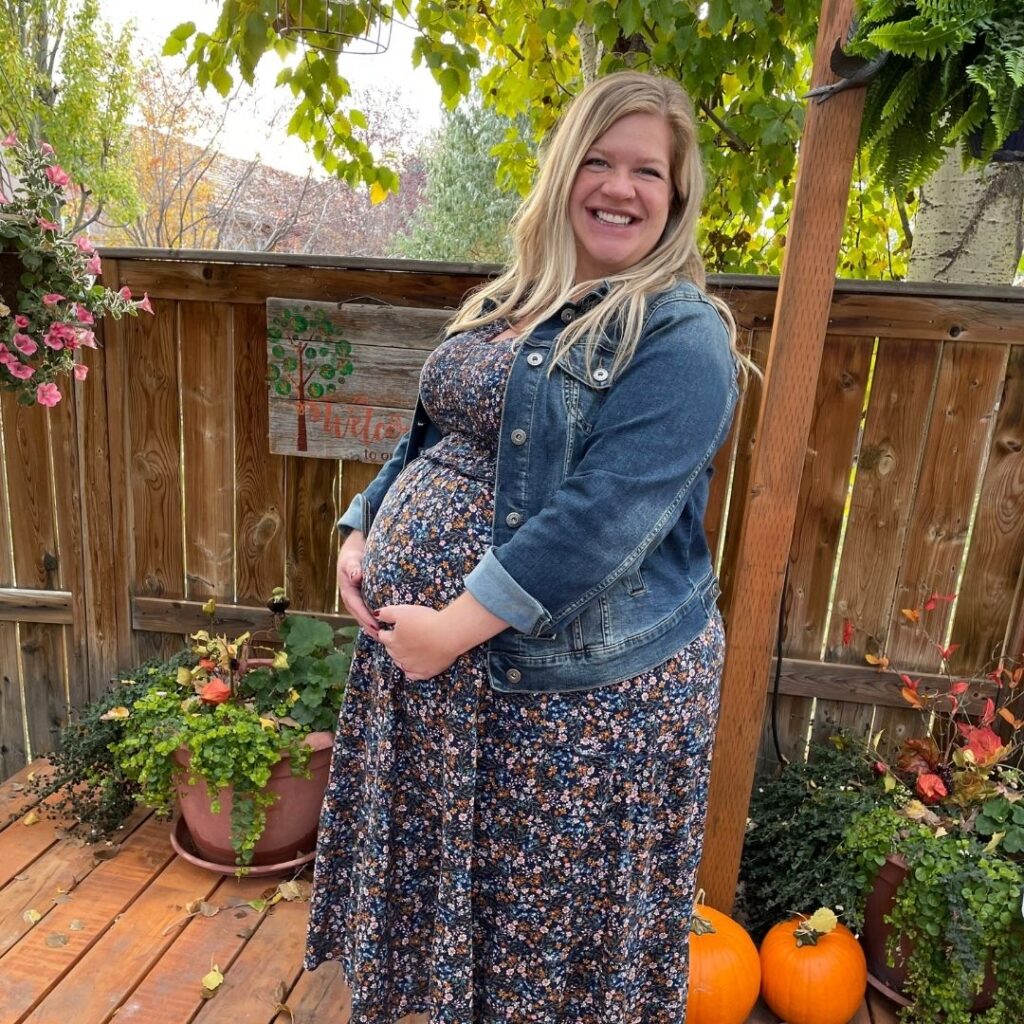
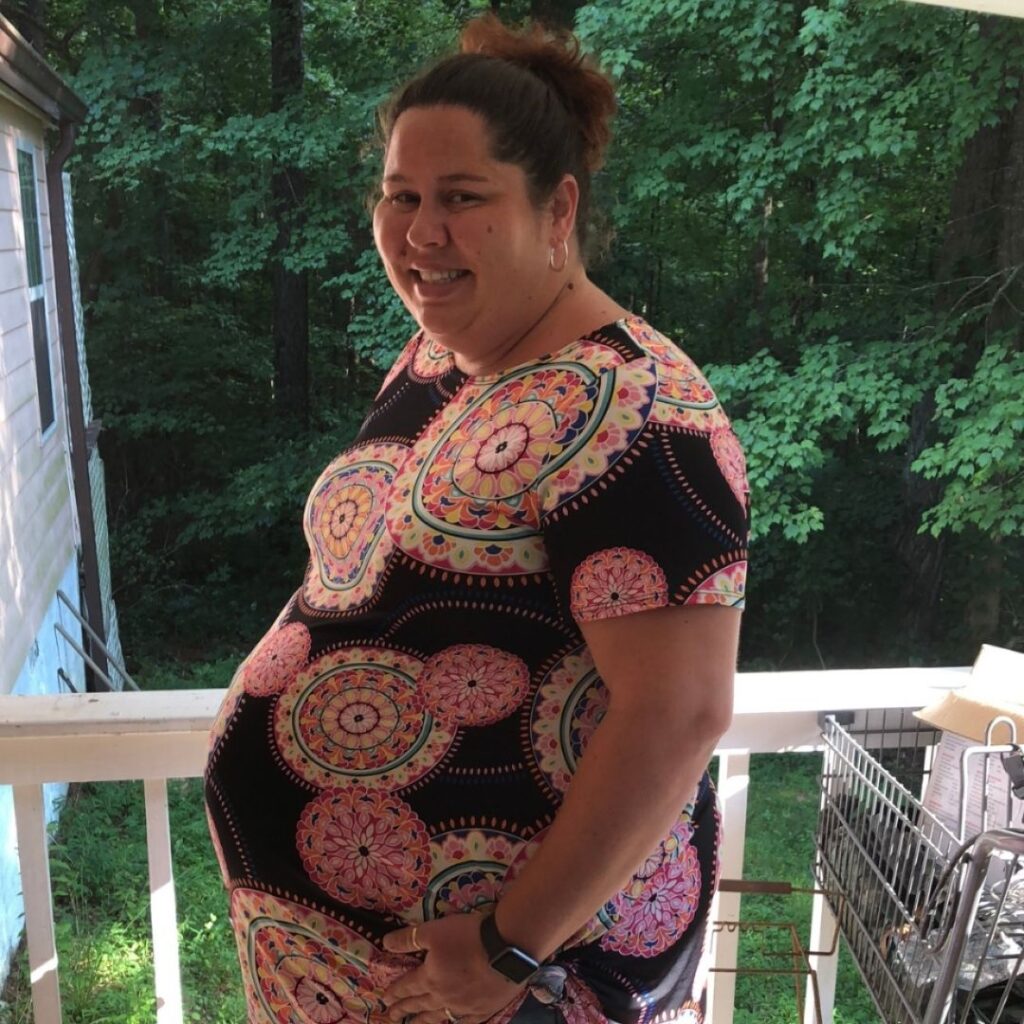


Week 40: Sharing Your Birth Story
Your baby may already be in your arms or could be still kicking in your belly. Regardless, you've made it so far and have learned so much.
During this final week, we'd love to spend a few minutes talking about documenting your birth story.
Processing through your birth experience can be really healing for many people.
For those who might have had an overwhelming, scary, or traumatic birth, it can help you work through all that happened. It could possibly even encourage you to get some therapeutic support if that would be helpful. Many therapists support people to process birth, and you can even access these services online.
For those who had an unexpected cesarean birth, ICAN is an excellent resource if you're struggling with how things unfolded.
You don't have to document your birth story in written form. Some people prefer doing audio or even video recording of their story. At the same time, others create a piece of artwork. Do whatever feels right for you!
Once you've documented your birth story, you can keep it to yourself or share it with the world – it's entirely up to you.
See our helpful resources for documenting your birth story to support you with this.
While we've reached the end of our week-by-week plus size pregnancy guide, we're still here for you!
We have plenty of postpartum resources, along with the Plus Mommy Podcast.
We hope you feel prepared to advocate for yourself in all healthcare settings moving forward because you deserve size-inclusive care – always! Not just during maternity.
And we hope you'll continue to advocate for yourself, just like you'll be the most incredible advocate for your baby.
You're amazing!


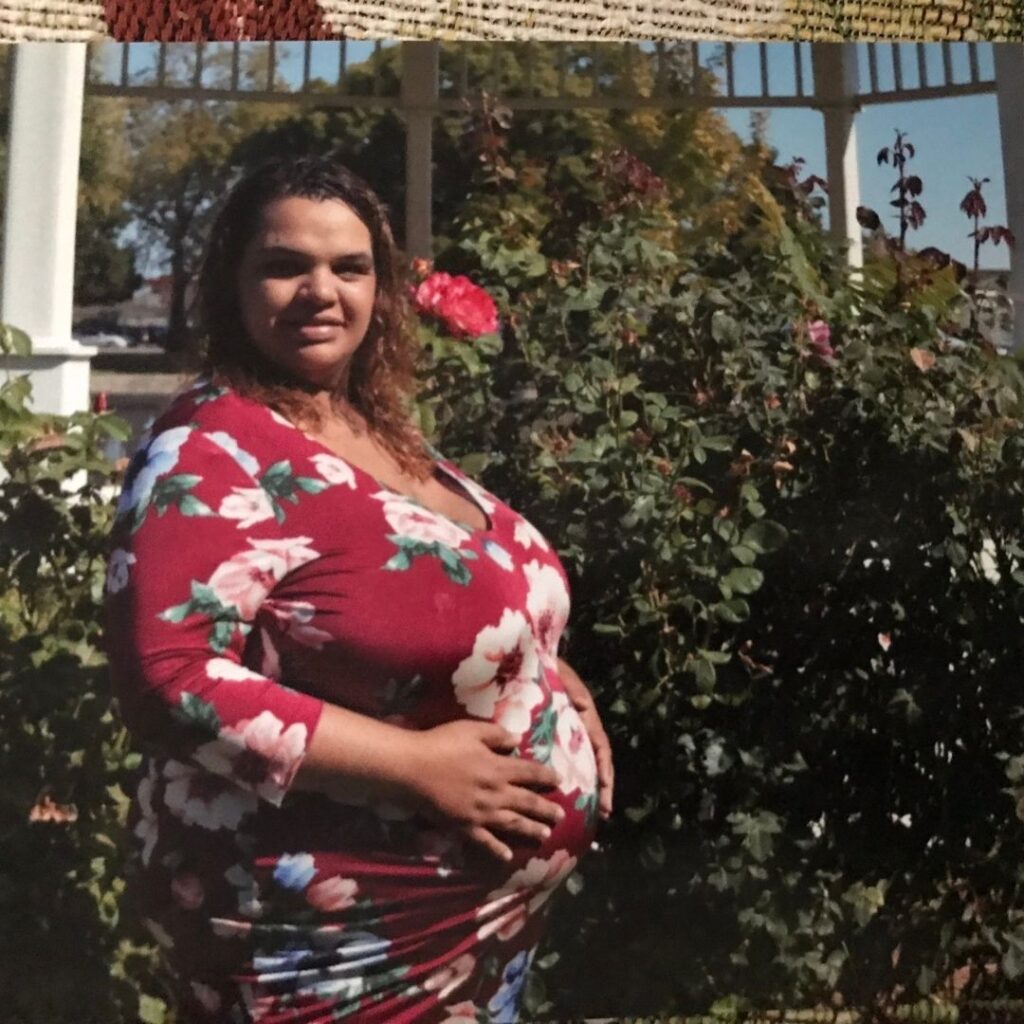
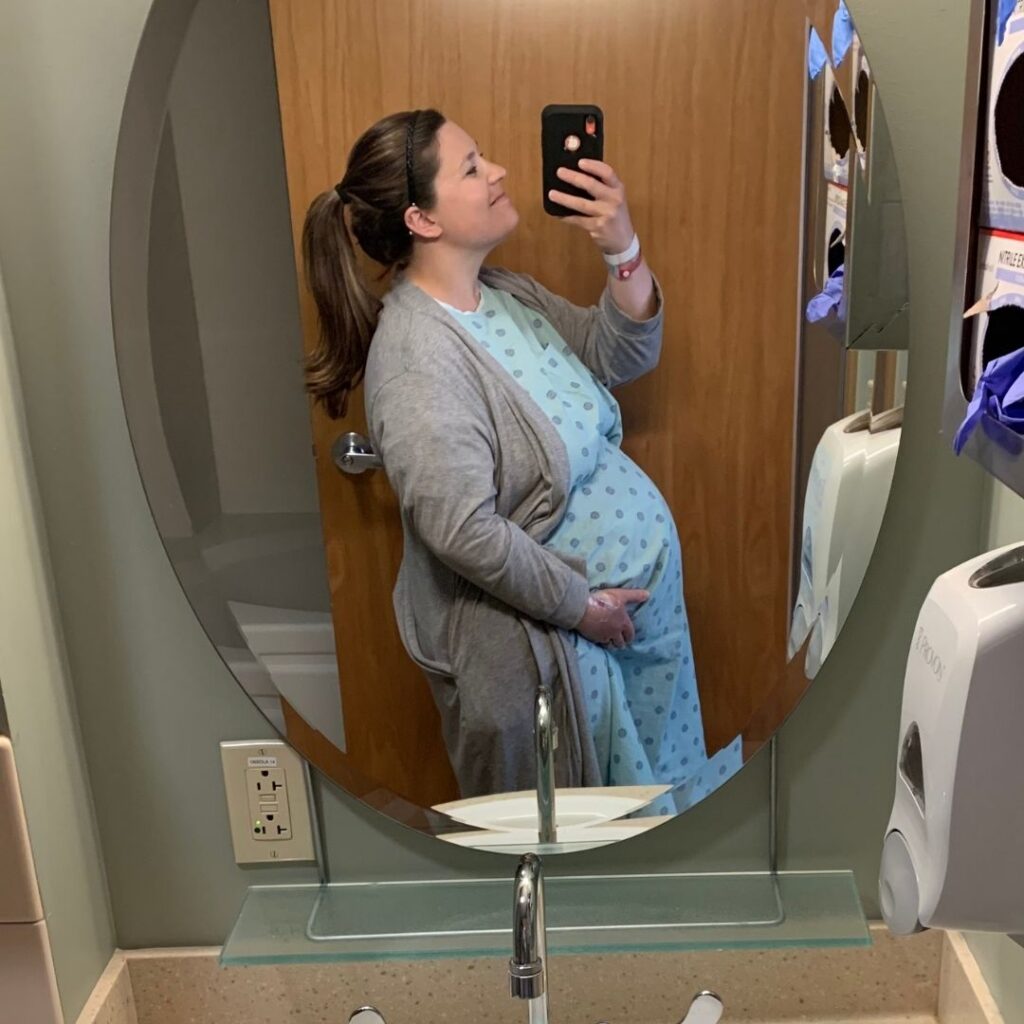
Third Trimester Plus Size Pregnancy References
- ACOG Committee opinion no. 549: Obesity in pregnancy
- S. Joy, N. Istwan, D. Rhea, C. Desch, and G. Stanziano, (2009) The Impact of Maternal Obesity on the Incidence of Adverse Pregnancy Outcomes in High-Risk Term Pregnancies, American Journal of Perinatology, vol. 26, no. 5, pp. 345–349, 2009.
- Gaudet, L., Ferraro, Z. M., Wen, S. W., & Walker, M. (2014). Maternal obesity and occurrence of fetal macrosomia: a systematic review and meta-analysis. BioMed research international, 2014, 640291.
- Pien, G. W., Pack, A. I., Jackson, N., Maislin, G., Macones, G. A., & Schwab, R. J. (2014). Risk factors for sleep-disordered breathing in pregnancy. Thorax, 69(4), 371–377.
- Stephen J. Pont, Rebecca Puhl, Stephen R. Cook, Wendelin Slusser, SECTION ON OBESITY, THE OBESITY SOCIETY; Stigma Experienced by Children and Adolescents With Obesity. Pediatrics December 2017; 140 (6): e20173034. 10.1542/peds.2017-3034
- Bever Babendure, J., Reifsnider, E., Mendias, E., Moramarco, M. W., & Davila, Y. R. (2015). Reduced breastfeeding rates among obese mothers: a review of contributing factors, clinical considerations and future directions. International breastfeeding journal, 10, 21.
- Hanne Jensen, AndersOle Agger & KjeldLeisgaard Rasmussen (1999) The influence of prepregnancy body mass index on labor complications, Acta Obstetricia et Gynecologica Scandinavica, 78:9, 799-802
- Shayna M. Norman, MD, Methodius G. Tuuli, MD, MPH, Anthony O. Odibo, MD, MSCE, Aaron B. Caughey, MD, PhD, Kimberly A. Roehl, MPH, and Alison G. Cahill, MD, MSCI. (2012) The effects of obesity on the first stage of labor. Obstet Gynecol. Jul; 120(1): 130–135.
- Chu, S.Y., Kim, S.Y., Schmid, C.H., Dietz, P.M., Callaghan, W.M., Lau, J. and Curtis, K.M. (2007), Maternal obesity and risk of cesarean delivery: a meta-analysis. Obesity Reviews, 8: 385-394
- Kawakita, T., Iqbal, S. N., Huang, C. C., & Reddy, U. M. (2017). Nonmedically indicated induction in morbidly obese women is not associated with an increased risk of cesarean delivery. American journal of obstetrics and gynecology, 217(4), 451.e1–451.e8.
- Anderson, N. H., McCowan, L. M., Fyfe, E. M., Chan, E. H., Taylor, R. S., Stewart, A. W., Dekker, G. A., North, R. A., & SCOPE Consortium (2012). The impact of maternal body mass index on the phenotype of pre-eclampsia: a prospective cohort study. BJOG : an international journal of obstetrics and gynaecology, 119(5), 589–595.
- Physical Activity and Exercise During Pregnancy and the Postpartum Period, AGOC Committee Opinion Number 650, December 2015
- Molyneaux, E., Poston, L., Ashurst-Williams, S., & Howard, L. M. (2014). Obesity and mental disorders during pregnancy and postpartum: A systematic review and meta-analysis. Obstetrics and gynecology, 123(4), 857-867. doi:10.1097/AOG.0000000000000170
- LaCoursiere, DY., Barrett-Connor, E., O'Hara, MW., Hutton, A., Varner, MW (2010) The association between prepregnancy obesity and screening positive for postpartum depression doi: 10.1111/j.1471-0528.2010.02569
- Blomberg, Marie MD, PhD Maternal Obesity and Risk of Postpartum Hemorrhage, (2011) Obstetrics & Gynecology: Volume 118 – Issue 3 – p 561-568 doi: 10.1097/AOG.0b013e31822a6c59
- Postpartum.net
- Aune, D., Saugstad, O. D., Henriksen, T., & Tonstad, S. (2014). Maternal body mass index and the risk of fetal death, stillbirth, and infant death: a systematic review and meta-analysis. JAMA, 311(15), 1536–1546.
- Gestational Diabetes Diagnosis: What Now? A Helpful To-Do List! - October 18, 2023
- Navigating Miscarriage and Self-Blame as a Plus-Size Individual - October 16, 2023
- How much does your BMI increase the odds of shoulder dystocia? - August 11, 2023


